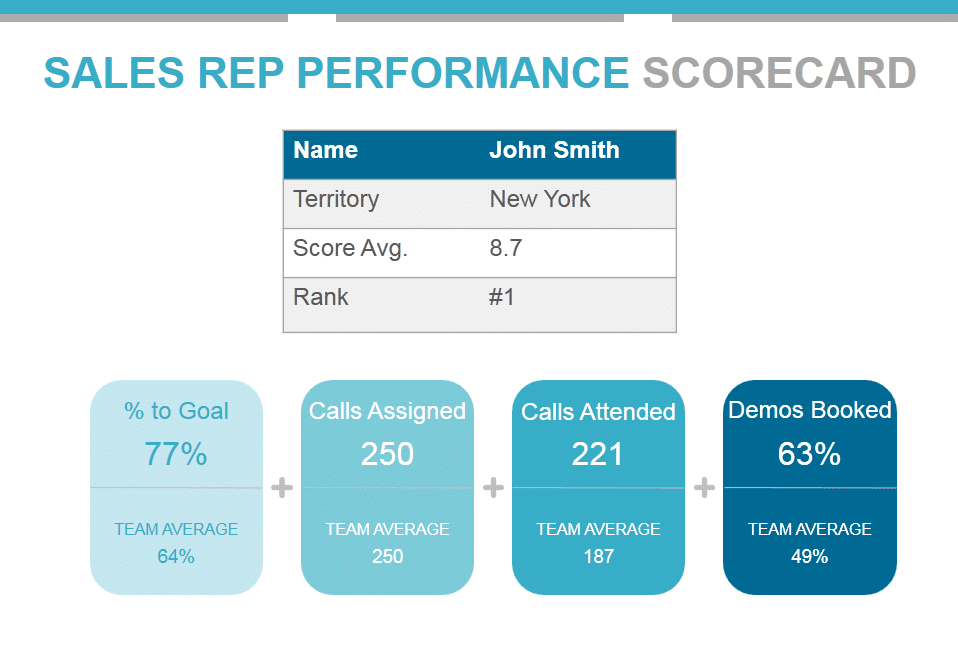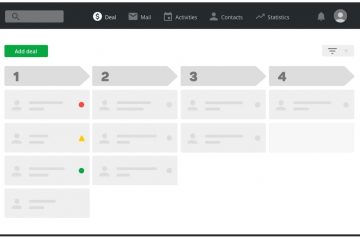Make Your Next Sales QBR Stand Out!
Running a business and being a part of the team that runs it, means attending a lot of meetings. However, gathering and discussing performance together can be of a lot of benefits. All we need to do is change the format of the meeting and be open to productive discussions.
Sales is a critical function and gauging performance and finding ways to improve it is essential. All of this can be achieved with dialogue and discussion between the sales team and leadership.
The format of meeting that can achieve these objectives is known as a sales QBR. In a sales QBR, all team members of the sales team sit down with higher-ups and discuss everything that can help improve the sales performance.

Image Source: adsalesgurus.com
What is a Sales QBR?
A Sales Quarterly Business Review is a discussion forum where the sales managers, supervisors, team leaders, and sales representatives at all levels sit down together and discuss things.
Sales performance of the previous quarter, objectives achieved, objectives missed, opportunities for improvement, areas of improvement, etc. are all discussed.
Reviewing the sales performance of the previous quarter helps managers plan better for the upcoming quarter. Sales representatives provide feedback on the sales strategies for the upcoming quarter.
Whether the considered objectives are feasible targets or not is discussed. When the targets have been finalized, everyone pitches in with their best ideas on how to achieve these targets.
Here are the reasons why sales QBRs are important.
- It enables the decision-makers to make better plans about the company’s long-term sales and revenue objectives.
- Provides an opportunity to appreciate the work of top-performing managers and sales representatives.
- Generates thorough feedback about the present and future sales strategies.
- Provides an opportunity to understand ground-level problems plaguing sales representatives.
- Provides an opportunity to provide constructive criticism to team members at all levels.
- Provides an opportunity to identify room for improvement at individual, team, and function levels.
- Helps test the feasibility of projections and forecasts thoroughly.
By now we’re clear about what a sales QBR is and all the reasons why it is beneficial and important. With these things out of the way, we can move ahead and learn more about a sales QBR.
Let’s start with the usual characteristics of a sales QBR.

Image Source: slideteam.net
The Characteristics of a Sales QBR.
Assigns Accountability
The sales team consists of many members who operate at different levels and perform different tasks. When you conduct a sales QBR, it becomes easy to identify which individual contributed how much to a certain functional objective.
With this insight, it becomes easy to assign credits of positive performance to a team member and appreciate their efforts. On the other hand, it becomes easy to identify which team member’s performance isn’t up to the mark.
With such insights, the sales team can assist low-performing team members with training and resources and high performers with rewards. This will usually result in a performance uplift across the board.
Conducts Diagnosis
The main objective of a sales QBR is to assess the performance of the previous quarter for the entire sales operation. Everything is assessed!
What goals were accomplished, what goals were not, how well were the objectives met, what areas performed better than expectations, what areas didn’t perform well, the underlying causes of each, etc?
A thorough diagnosis of the performance reveals a lot in terms of opportunities for improvements, which strategies to continue with, and how to overcome challenges.
Multi-level Performance Review
A sales QBR involves reviewing the performance of all team members of the sales team, right from the top executives to ground-level sales representatives.
With everyone under the scrutiny of a performance review, every operational area and individual performance that can be improved are identified. Moreover, by reviewing the performance of top executives, the risks of complacency are minimized.
So, by conducting a sales QBR, a company can improve throughout the various levels of sales operations. Improving strategy and its execution at the ground level.
Aligns Performance to Objectives
A good performance is always desirable. However, when a good performance doesn’t accomplish business objectives, it is still a negative.
While this sounds like an unusual occurrence, it happens quite often. When performances aren’t reviewed against business objectives at a timely interval, they can deviate.
A sales QBR enables a business to eliminate such deviations. By reviewing performance against business objectives every quarter, one can ensure that good performance always results in the completion of business objectives.
Generates Sound and Actionable Strategy.
The decision-makers at the top level go through a lot of reports and number crunching before formulating new strategies.
Sometimes, a strategy sounds promising on paper but fails to deliver in actuality. There exists a disconnect between reports and the actual situation on the ground level.
A sales QBR facilitates communication between executives who draft strategies and sales representatives who operate at the ground level.
With the knowledge and insights, the sales representatives have, they can provide inputs to strategy formulation to ensure it is feasible and actionable.
Prerequisites to Create Better QBRs
A Simple Process
Having a complicated structure for a sales QBR beats the entire purpose of having it in the first place. Make sure the process of your sales QBR is simple. Everyone needs to easily understand what all is going to be presented and discussed.
When there is clarity regarding what is going to happen and what is to be gained through discussion, it becomes easy to conduct a fruitful sales QBR.
Access to Updated Data
Often overlooked but for a sales QBR to be effective, it needs to be conducted using up-to-date data that has been validated.
Moreover, presenters at all levels must have access to the same database. This ensures everyone is on the same page and no informational disconnects are hindering the sales QBR process.
Having a sales operations solution like Salespanel helps here. You have access to updated and necessary sales data from all your data input points, all in one place.
Having Clear Roles and Expectations
The presenters, evaluators, and participants must know what they’re expected to do. The main aim of conducting a sales QBR is to improve performance and accomplish business goals.
The approach is to identify areas of improvement and improve performance. Attributing failure or low performance will only negatively impact their future performance.
Present Data Visually
It is a known fact that humans process and recall visual information better. So instead of presenting plain numbers as figures, represent data using charts, bar graphs, and other methods of visual data representation.
This will improve information delivery and recalling. As a result, team members will participate actively, discuss issues and remedies resulting in an effective sales QBR.
Include Appropriate Sales Metrics
These sales metrics will vary according to the type of your industry and business goals. You have to ensure that the sales metrics you’re using for your sales QBR represent the performance that is essential in achieving your business goals.
Keeping this in check will guarantee that you’re only focused on improving the performance that will help your business achieve its business goals.
Strategy to Create Your Next Sales QBR.
Keep Things Simple And Team Members Informed
The process of sales QBR must necessarily be simple to ensure that it ends up being productive. Every team member needs to be well versed with the process so they’re able to actively participate and provide inputs.
When the sales QBR process is simple and everyone understands it and is well informed, the entire discourse ends up being productive.
Address Long-Term And Short-Term Goals
Reviewing and analyzing short-term business goals is indeed important. What is more important is to always remember the big picture.
Every business has a long-term vision. Every short-term goal that is accomplished should push forth a business on the path to achieving its long-run objective. Thus, discussing both the long-term and short-term objectives of the sales operation is important.
Present And Discuss Forecasts
A sales QBR shouldn’t be reduced to just being an assessment of the past sales performance. Sales forecasts can be a powerful inclusion in a sales QBR.
Presenting and discussing the sales forecasts with team members at all levels is beneficial. It allows for inputs from all levels and ensures that the forecasts are realistic and accurate. Thus, operating with a roadmap produces positive performance.
Emphasis on Identifying Opportunities And Risks
Improving the sales function and achieving goals is what a sales QBR aims to do. These results are achieved through identifying opportunities that the firm can capitalize upon and make gains and improvements.
On the other hand, identifying risks enables a firm to minimize those. This ensures the performance isn’t impacted negatively due to unforeseen circumstances.
Ending With an Open-Ended Dialogue
Open-ended dialogues are powerful as they can help team members discuss topics that are important but not part of the agenda. Moreover, open-ended discussions can help a business reevaluate its long-term and short-term visions in response to changes in technology and the market as a whole.
Setting up open-ended conversations helps everyone share their input on how to improve performance, overall.
Conclusion
A sales QBR is a powerful and necessary way to keep your sales performance in check and aligned with your business objectives.
Opportunities for improvements can be identified and acted upon, strategies are tested for feasibility, business goals be set realistically with a roadmap to achieve them.
Sell more, understand your customers’ journey for free!
Sales and Marketing teams spend millions of dollars to bring visitors to your website. But do you track your customer’s journey? Do you know who buys and why?
Around 8% of your website traffic will sign up on your lead forms. What happens to the other 92% of your traffic? Can you identify your visiting accounts? Can you engage and retarget your qualified visitors even if they are not identified?



